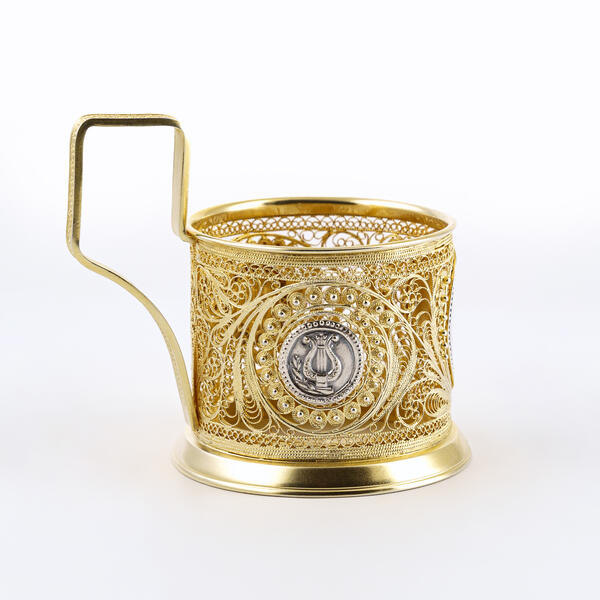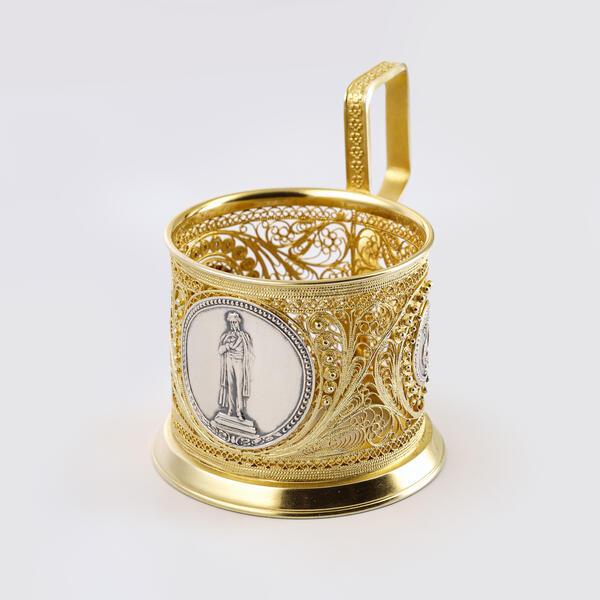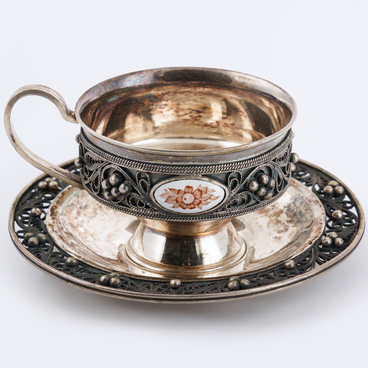The history of Mstyora artistic metalworking began in the 18th century, when, in connection with the development of icon painting, specialized workshops began to appear in the village. Some minted rizas and oklads (icon covers), and others decorated icons with paper-thin metal sheets. At the beginning of the 20th century, a factory that manufactured icon covers using foil was opened in Mstyora. It was later transformed into a copper rolling plant. In the 1930s, metal dishes decorated with engraving, gilding and silvering were made there.
In 1938, the Mstyora Artel named in honor of Vyacheslav Molotov began to produce filigree items and objects made of non-ferrous metals. After the Great Patriotic War, the artel produced haberdashery and jewelry. The craftsmen also restored antique silverware, which had a great impact on improving the overall level of artistic skill of those who worked in the artel.
In the 1950s, a special department of artists and craftspeople was formed at the factory. It was tasked with creating a new direction in the manufacture of art jewelry made of nickel silver with embossing and engraving, as well as filigree items, using gilding, silvering and oxidizing (antiquing) techniques. The factory’s filigree work became more delicate and freer, and the products acquired an openwork, festive, and elegant look.
In 1956, the All-Union Chamber of Commerce awarded the enterprise a Diploma of the II degree for the systematic, mass production of high-quality jewelry items. The Mstyora style of filigree has been forming for several decades. It is distinguished by a fine floral and geometric ornament, where every detail repeats and emphasizes the shape of the product, as well as by a complex decorative pattern, typical of Mstyora metalwork.
Three silver-plated medallions are featured on the
gilded cup holder “Monument to Alexander Pushkin”. Its body is made in the form
of a cylinder standing on a brass cone-shaped bottom, with a handle in the form
of a square. An openwork pattern of a stylized twig with elongated leaves
frames the central medallion depicting the monument to Alexander Pushkin in
Moscow. It was made by the sculptor Alexander Mikhailovich Opekushin. The
medallion is decorated with a lyre and a laurel branch around the edges.





